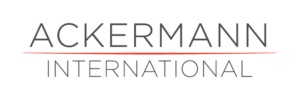Companies with high-maturity talent acquisition functions exhibit 18 percent higher revenue and 30 percent greater profitability compared to companies with low-maturity talent acquisition performance.
According to study “Six Key Insights to Put Talent Acquisition at the Center of Business Strategy and Execution” by Bersin – Deloitte, the acquisition and development of talent at all levels of high performing organizations is no accident — it’s the result of specific and surprisingly consistent characteristics that can be learned and implemented.
Bersin’s research shows that in high performing organizations, talent acquisition has evolved from a routine, regulatory-minded activity to a function of central strategic importance; and these organizations exhibit six common traits:
HITA teams build the workforce through integration with the business. Senior executives view talent acquisition teams as essential players in executing strategy and promoting the company’s people culture. Integration also allows talent acquisition teams to better anticipate broader business needs and better partner with hiring managers.
Existing employees are recognized as a strategic resource, and internal mobility is a part of company culture. Hiring managers and recruiters know their internal talent’s capabilities, and hiring managers work with recruiters to cultivate talent from within.
Candidates are evaluated for work ethic, values, and potential as much as skills and past experiences. Bersin’s report found that nine out of 0 high performing talent acquisition functions use workplace values as a basic for hiring, resulting in a stronger corporate culture that is reinforced by each new hire.
TA teams construct a personalized candidate journey. Rather than a “one sice fits all” experience, HITA functions market the role to specific candidates to not only engage top talent, but also strengthen the employment brand and promote the organization’s culture.
Mature teams continuously regenerate because of dedication to upskilling, informal learning and professional growth. Talent acquisition professionals are encouraged to engage in a mix of tradicional education, mentor relationships and networking opportunities.
Highly-mature teams use AI and predictive data analytics. The practice sarpens the talent acquisition function by using data-driven analytics and digital, cognitive tools to better source and assess candidates and prevent possible misjudgments caused by bias or false logic.
Source: Deloitte
More information: https://www.bersin.com/deloittes-bersin-identifies-key-talent-acquisition-practices-contribute-organizations-high-performance/
